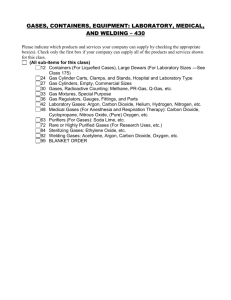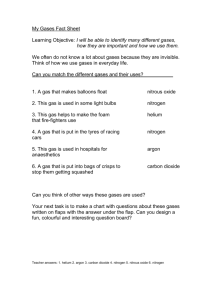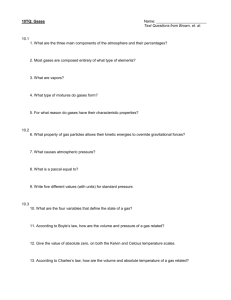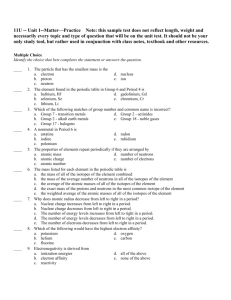Gas Laws Lab - Collin College
advertisement
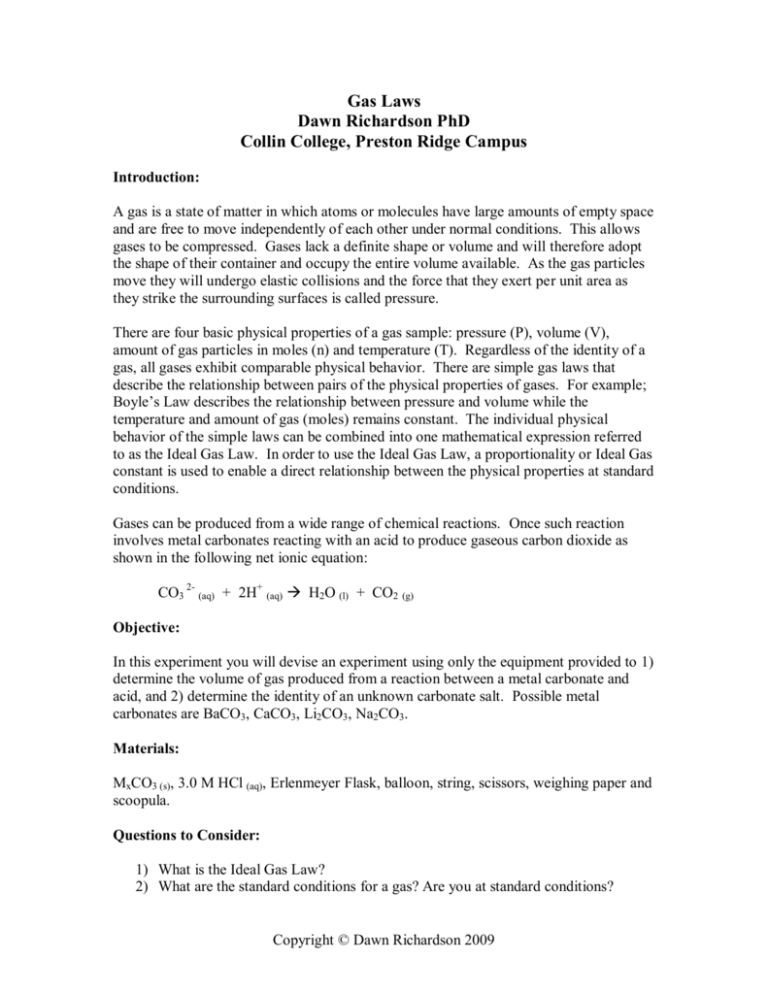
Gas Laws Dawn Richardson PhD Collin College, Preston Ridge Campus Introduction: A gas is a state of matter in which atoms or molecules have large amounts of empty space and are free to move independently of each other under normal conditions. This allows gases to be compressed. Gases lack a definite shape or volume and will therefore adopt the shape of their container and occupy the entire volume available. As the gas particles move they will undergo elastic collisions and the force that they exert per unit area as they strike the surrounding surfaces is called pressure. There are four basic physical properties of a gas sample: pressure (P), volume (V), amount of gas particles in moles (n) and temperature (T). Regardless of the identity of a gas, all gases exhibit comparable physical behavior. There are simple gas laws that describe the relationship between pairs of the physical properties of gases. For example; Boyle’s Law describes the relationship between pressure and volume while the temperature and amount of gas (moles) remains constant. The individual physical behavior of the simple laws can be combined into one mathematical expression referred to as the Ideal Gas Law. In order to use the Ideal Gas Law, a proportionality or Ideal Gas constant is used to enable a direct relationship between the physical properties at standard conditions. Gases can be produced from a wide range of chemical reactions. Once such reaction involves metal carbonates reacting with an acid to produce gaseous carbon dioxide as shown in the following net ionic equation: CO3 2- (aq) + 2H+ (aq) H2O (l) + CO2 (g) Objective: In this experiment you will devise an experiment using only the equipment provided to 1) determine the volume of gas produced from a reaction between a metal carbonate and acid, and 2) determine the identity of an unknown carbonate salt. Possible metal carbonates are BaCO3, CaCO3, Li2CO3, Na2CO3. Materials: MxCO3 (s), 3.0 M HCl (aq), Erlenmeyer Flask, balloon, string, scissors, weighing paper and scoopula. Questions to Consider: 1) What is the Ideal Gas Law? 2) What are the standard conditions for a gas? Are you at standard conditions? Copyright © Dawn Richardson 2009 3) 4) 5) 6) 7) What are the standard units for each of the physical properties? What is the value for the proportionality constant? How can the volume of the gas collected be calculated? (Hint: V= 4/3/ r3) How can the molecular mass of a gas sample be calculated from a gas law? What is the balanced chemical reaction for this experiment? Copyright © Dawn Richardson 2009




